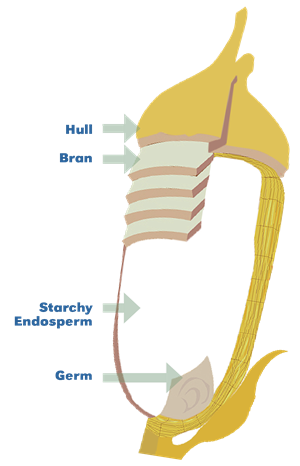January 1, 2021
The Anatomy of Rice
 While a grain of rice may be small in stature, its composition is a mystery to most! In this post, we hope to clear up that mystery and help you understand the anatomy of rice as we breakdown our favorite tiny, but mighty grain!
While a grain of rice may be small in stature, its composition is a mystery to most! In this post, we hope to clear up that mystery and help you understand the anatomy of rice as we breakdown our favorite tiny, but mighty grain!From the Field
When it comes from the growing field, each grain of rice is enclosed in a tough hull, or husk, which must be removed as it is inedible in this form. The inedible rough rice is harvested by combines during late August through early October and is then milled by passing it through sheller machines to remove the hulls.To The Mill
Once the hull is removed through milling, what’s left underneath is the nutritious whole grain (which may range in color from brown to reddish or even black, depending on the color of the bran layers) with the bran layers surrounding the kernel still intact. Under the hull are the bran and germ which are high in vitamins, minerals, oil, and various phytonutrients that have many health benefits. Rice at this stage is 100% whole grain and may be eaten at this stage, but most is processed further. Popular whole grain varieties include brown rice, black rice, red rice, wild rice, and even purple rice! Through additional milling that rubs the grains together under pressure, the bran and germ are removed and what remains is the endosperm, which is the white rice that is well known and consumed throughout the world.
Through additional milling that rubs the grains together under pressure, the bran and germ are removed and what remains is the endosperm, which is the white rice that is well known and consumed throughout the world. To replace some of the nutrients lost in milling, most American processors apply a thin coat of nutrients like thiamine, niacin, iron, and folic acid to milled rice to produce what is known as enriched rice.
To learn more about rice types and varieties, visit our U.S. Rice Varieties page.
